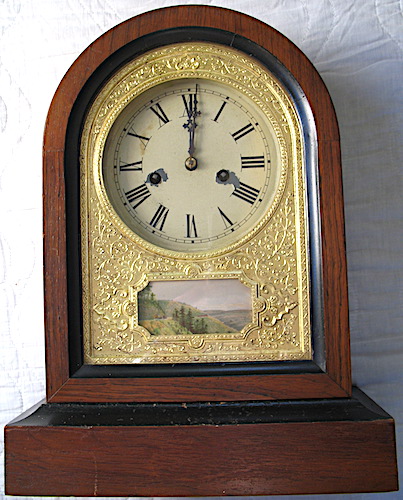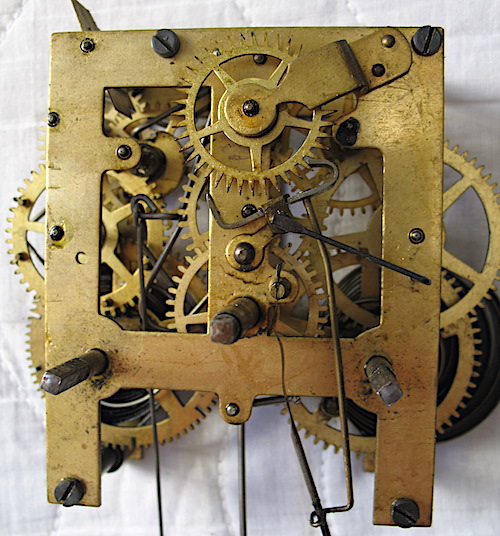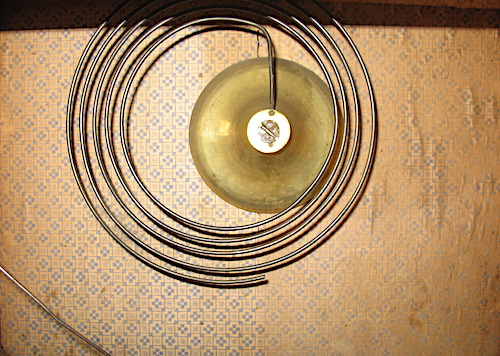Jerome & Co. clock made by S.B. Jerome and likely dating to the 1870s. Many of S.B. Jerome’s shelf clocks feature use of a molded composite material (often incorrectly referred to as gutta percha) as medallions added to the case or as inserts in door panels. The composite material is described in more detail on the page for another of my Jerome & Co. shelf clocks, where its use is associated with a design patent for a clock-case front. It is not clear to me whether the patent is claiming credit for inventing the composite material or simply for the design of the clock front, which happens to incorporate composite panels. I believe it is the latter, but the patent also describes how the panels are made. If the invention of the composite panels is also an integral element of the patent, then this clock may date to earlier than August 9, 1870 (patent date), because the patent is not acknowledged on the label. The clock that is the subject of this post takes the use of the composite material to an extreme, with a large gilt panel occupying nearly the full front of the clock. The composite material itself is typically colored: a deep red and a black are the most common. Less commonly the composite has been covered with a gold-colored surface, as in this example.
Many Jerome & Co. shelf clocks feature a label made of either wood, cardboard, or plain paper glued to a wood panel often set into the door frame. This clock features a rich blue paper label with gilt lettering. The directions found on all label types are essentially the same. Some, however, also contain instructions for an alarm and/or a notice that the clock has an element that has been patented.
Front view of the Noah Pomeroy 30-hr, spring-driven movement. Pomeroy was the primary supplier of movements to S.B. Jerome.
Rear view of the Pomeroy movement.
Another feature that is characteristic of S.B. Jerome shelf clocks is the use of wallpaper covering the backboard.




